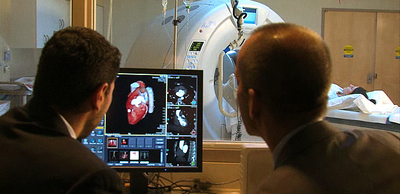 |
|
NVIDIA awakened the world to the power of computer graphics with the invention of the GPU. Since then, GPUs have been applied to a growing number of the most complex challenges faced by society.
For healthcare professionals and their patients, medical imaging technologies running GPUs are delivering safer, faster, higher quality care.
Courtesy of NVIDIA |
| |
Santa Clara, CA, USA - November 10, 2011
NVIDIA today announced that
four leading applications for material-science and biomolecular modeling - LAMMPS, GROMACS, GAMESS, and QMCPACK - have added support for multiple GPU acceleration, enabling them to cut simulation times from days to hours.
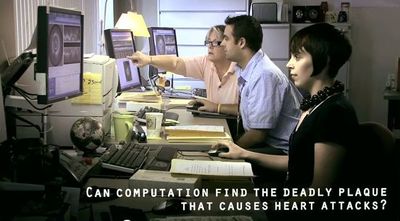 |
|
Take a glimpse into how scientists and researchers are racing to find answers to important problems that impact our lives.
See a snippet of a documentary that depicts how scientific discovery can be accelerated by combining theory and experimentation with computing to fight cancer, prevent heart attacks, and spur new advances in robotic surgery.
Watch the full episode here: www.nvidia.com/the-race-for-better-science
Courtesy of NVIDIA |
| |
As a result, scientists can study larger molecular models for longer time periods with greater accuracy, leading to increased knowledge of the potential impact of drugs and the effectiveness of new materials.
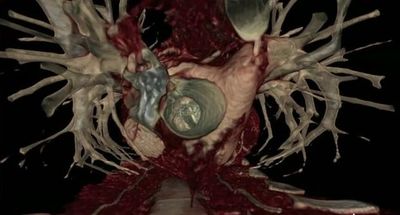 |
|
Take a glimpse into how scientists and researchers are racing to find answers to important problems that impact our lives.
See a snippet of a documentary that depicts how scientific discovery can be accelerated by combining theory and experimentation with computing to fight cancer, prevent heart attacks, and spur new advances in robotic surgery.
Watch the full episode here: www.nvidia.com/the-race-for-better-science
Courtesy of NVIDIA |
| |
Drug developers could also benefit from shorter discovery times and lower development costs.
 |
|
Take a glimpse into how scientists and researchers are racing to find answers to important problems that impact our lives.
See a snippet of a documentary that depicts how scientific discovery can be accelerated by combining theory and experimentation with computing to fight cancer, prevent heart attacks, and spur new advances in robotic surgery.
Watch the full episode here: www.nvidia.com/the-race-for-better-science
Courtesy of NVIDIA |
| |
The four scientific modeling applications join a growing list of applications - including AMBER, NAMD and TeraChem, among others - that enable university, government and industry researchers to advance research by leveraging the power of GPUs.
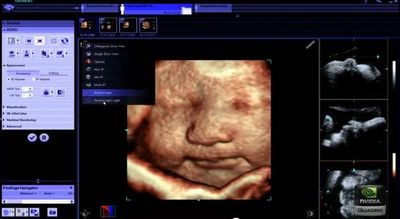 |
|
See a new level of ultrasound realism with an immersive, detailed and real-to life experience. syngo.fourSight Workplace software and Quadro delivers a true stereoscopic view of 3D ultrasound images to provide a robust analysis solution for the most demanding volume imaging needs.
Courtesy of NVIDIA |
| |
"Wide access to inexpensive, energy efficient supercomputing enabled by GPUs has the potential to accelerate the pace of scientific research,"
Sumit Gupta, manager of the Tesla business unit at NVIDIA.
"The benefit of this computing power to science is significant, such as enabling researchers to more quickly and accurately simulate biological behavior of protein and drug candidate interactions prior to expensive and time-consuming animal studies and patient trials."
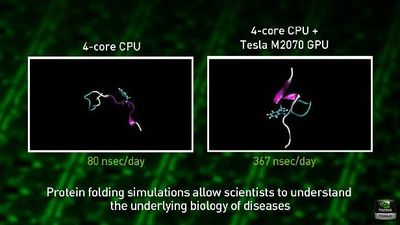 |
| Courtesy of NVIDIA |
| |
The four applications are widely used by scientists engaged in using supercomputing to advance modeling in a variety of key areas:
•
GAMESS is a quantum chemistry application important in the design of new drugs and materials. It uses computational methods to solve the electronic structure and properties of molecules.
•
GROMACS enables the simulation of biomolecular interactions between proteins and drug candidates. It can be used to study protein folding and mis-folding, which is relevant in understanding such diseases as Alzheimer's, Huntington's disease and some forms of cancer.
•
LAMMPS is utilized to model, at the atomic scale, soft (biomolecules, polymers) or solid-state (metals, semiconductors) materials.
•
QMCPACK simulates the properties of materials, achieving high accuracy and excellent scalability using a continuum quantum Monte Carlo method.
Quotes
"We like to push the envelope as far as we can toward highly scalable efficient code. GPU technology is the most promising way to achieve this goal. Given our association with a DOE laboratory, energy efficiency is equally important, which is another benefit of accelerating quantum chemistry using GPUs."
-
Mark Gordon, distinguished professor at Iowa State University's Chemistry Department, director of the Applied Mathematical Sciences Program at AMES Laboratory, project lead for GAMESS
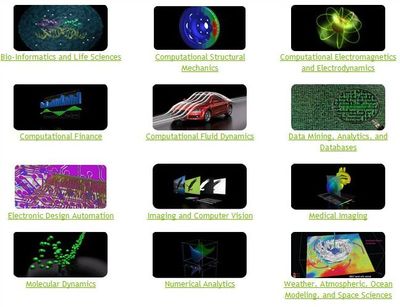 |
|
Industry Software Solutions
Courtesy of NVIDIA |
| |
"GROMACS 4.6 supported by GPUs is expected to accelerate simulation performance 2-3 times faster than previously possible. The greater simulation speed enables research scientists to have deeper insights into the biological behavior of drug candidate and protein receptors involved in diseases."
- Erik Lindahl, professor of Theoretical & Computational Biophysics, KTH Royal Institute, and technology professor of Computational Structural Biology, at Stockholm University's AlbaNova University Center
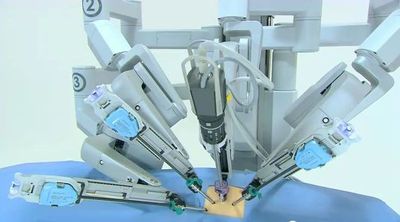 |
|
Industry Software Solutions
Courtesy of NVIDIA |
| |
"For major workloads using QMCPACK, we're seeing a 3x node-to-node speedup for single-GPU nodes over dual-socket CPU nodes. We're also seeing excellent scaling of this performance for hundreds of GPUs. This allows us to investigate material properties at an unprecedented scale and level of accuracy."
- Jeongnim Kim, R&D scientist at Oak Ridge National Laboratory.
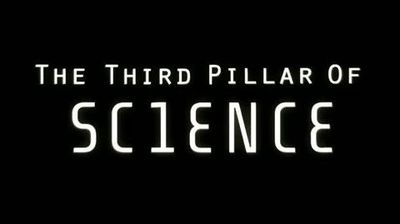 |
| Courtesy of NVIDIA |
| |
"Molecular dynamics practitioners are handicapped by well-known timescale limitations: they can't simulate long enough to model many phenomena of interest," said one of the original LAMMPS developers. "Simulation timescales can be extended dramatically by use of large-scale clusters of GPUs."
- Steve Plimpton, distinguished member of technical staff at Sandia National Laboratories
 |
|
Tesla Data Center Solutions
For large-scale installations
High Performance Computing - Supercomputing with Tesla GPUs
Experience the NVIDIA® Tesla™ 20-series family of GPUs, the fastest parallel processors for HPC.
Based on the "Fermi" GPU computing architecture, Tesla GPUs are designed from the ground up for high performance computing (HPC) to deliver up to 10X higher application performance and are ideal for seismic processing, biochemistry simulations, weather and climate modeling, signal processing, computational finance, CAE, CFD, and data analysis.
Courtesy of NVIDIA |
| |
"The Availability of many computationally efficient GPU nodes locally has allowed us to approach drug design in a new way, giving fresh insights into disease mechanisms. With GPUs, we've been able to run many more simulations with fewer assumptions, creating more realistic models."
- Dr. Michael Kuiper, computational scientist at Victorian Partnership for Advanced Computing
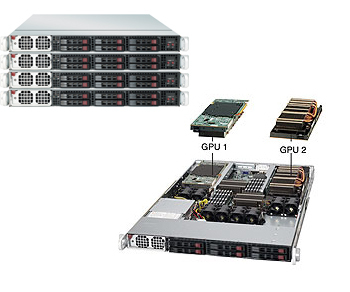 |
|
Tesla MD SimCluster Configuration
GPU Computing Enabled Cluster
· 4 Nodes – 8 Tesla M2090 GPUs with CUDA 4.0.
Optimized For Speed
· Dual 6-core CPUs + Infiniband QDR /node.
Preconfigured With AMBER 11 or NAMD 2.8
· No application code development needed.
No Setup Required
· Buy cluster loaded with Linux OS and cluster management software.
Courtesy of NVIDIA |
| |
Biomolecular and material-science researchers interested in a free trial of these new these GPU-accelerated applications can register today for the NVIDIA® Tesla™ MD SimCluster program.
This off-the-shelf integrated cluster solution is
fully optimized to simulate large-size models and
achieve higher accuracy, while significantly reducing simulation time.
About NVIDIA
NVIDIA (NASDAQ: NVDA) awakened the
world to computer graphics when it invented the GPU in 1999.
Today, its
processors power a broad range of products from smart phones to supercomputers.
NVIDIA's mobile processors are used in cell phones, tablets and auto infotainment systems.
PC gamers rely on GPUs to enjoy spectacularly immersive worlds.
Professionals use them to create visual effects in movies and design everything from golf clubs to jumbo jets.
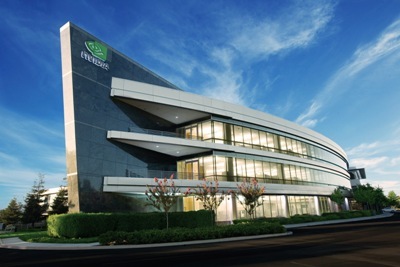 |
NVIDIA’s Santa Clara headquarters.
Courtesy of NVIDIA |
| |
And
researchers utilize GPUs to advance the frontiers of science with high-performance computing.
The company holds more than
2,100 patents worldwide, including ones covering ideas essential to
modern computing.
For more information, see
www.nvidia.com
Source: NVIDIA
http://www.nvidia.com/object/newsroom.html
Chris A. Malachowsky
Co-Founder, NVIDIA Fellow, and Senior Vice President of Research
 |
|
Chris A. Malachowsky - Co-Founder, NVIDIA Fellow, and Senior Vice President of Research
Courtesy of NVIDIA |
| |
Chris Malachowsky co-founded NVIDIA in 1993 and has over 30 years of industry experience.
He has been instrumental in managing, defining and driving the company's core technologies as it has grown from a startup to the global leader in visual and parallel computing.
As an executive at NVIDIA, his roles have been diverse, heading numerous functions, including IT, operations, and all facets of the company's product engineering.
He currently is responsible for NVIDIA's world-class research organization chartered with developing the strategic technologies that will help drive the company's future growth and success.
Malachowsky previously held engineering and technical leadership positions at HP and Sun Microsystems.
A recognized authority on integrated-circuit design and methodology, he has authored close to 40 patents.
He holds a BSEE degree from the University of Florida and an MSCS degree from Santa Clara University.
Both schools have honoured Malachowsky with Distinguished Alumnus awards.
Source: NVIDIA
http://www.nvidia.com/object/bio_malachowsky.html
Video
The Third Pillar of Science
http://www.youtube.com/watch?feature=player_embedded&v=3DbAB2ChDBw
Video
The Wonders of 3D Imaging with Siemens and Quadro
http://www.youtube.com/watch?feature=player_embedded&v=zIdGrhnLVBc
ASTROMAN Magazine - 2011.08.07
NVIDIA Tesla GPUs Used by J.P. Morgan Run Risk Calculations in Minutes, Not Hours
http://www.astroman.com.pl/index.php?mod=magazine&a=read&id=1030
ASTROMAN Magazine - 2011.03.27
NVIDIA GeForce GTX 590 Is World's Fastest Graphics Card
http://www.astroman.com.pl/index.php?mod=magazine&a=read&id=930
ASTROMAN Magazine - 2011.01.16
Intel to Pay NVIDIA Technology Licensing Fees of $1.5 Billion
http://www.astroman.com.pl/index.php?mod=magazine&a=read&id=881
ASTROMAN Magazine - 2010.10.29
NVIDIA Tesla GPUs Power World's Fastest Supercomputer
http://www.astroman.com.pl/index.php?mod=magazine&a=read&id=831
ASTROMAN Magazine - 2010.10.10
New NVIDIA Quadro Professional Graphics Solutions
http://www.astroman.com.pl/index.php?mod=magazine&a=read&id=820
ASTROMAN Magazine – 2010.05.09
NVIDIA GPUs Provide Edge to 3D Animators Utilizing Autodesk Softimage 2011
http://www.astroman.com.pl/index.php?mod=magazine&a=read&id=716
ASTROMAN Magazine – 2010.02.27
NVIDIA Names University Of Maryland A CUDA Center Of Excellence
http://www.astroman.com.pl/index.php?mod=magazine&a=read&id=671
ASTROMAN Magazine – 2010.02.27
ADAM - Notion Ink Pixel Qi tablet with NVIDIA Tegra2 processor
http://www.astroman.com.pl/index.php?mod=magazine&a=read&id=670
ASTROMAN Magazine – 2010.02.27
Next Generation NVIDIA Tegra
http://www.astroman.com.pl/index.php?mod=magazine&a=read&id=669

